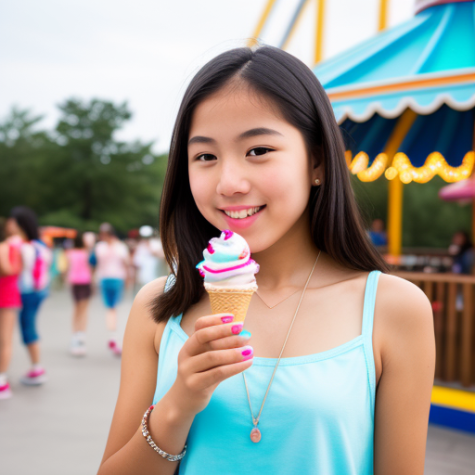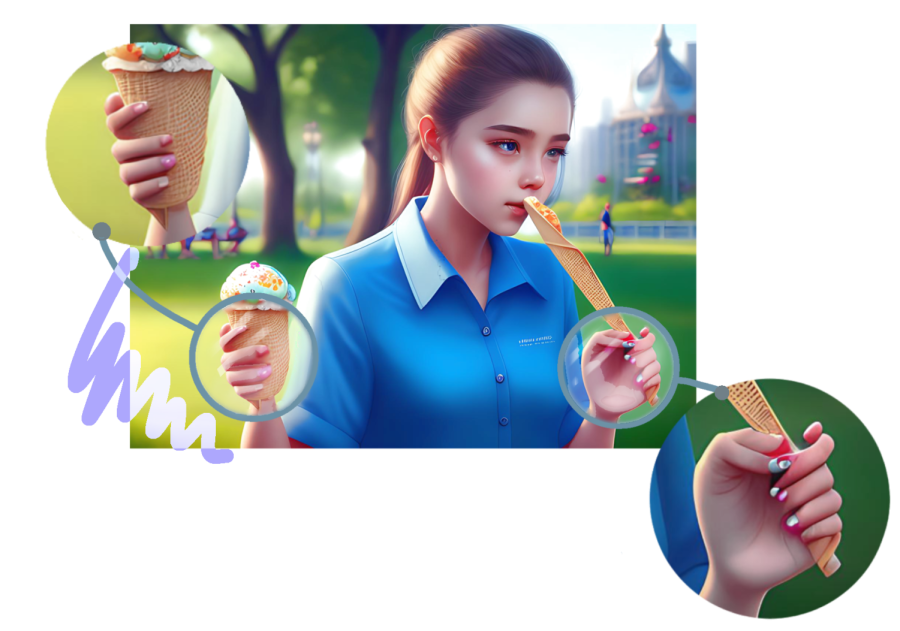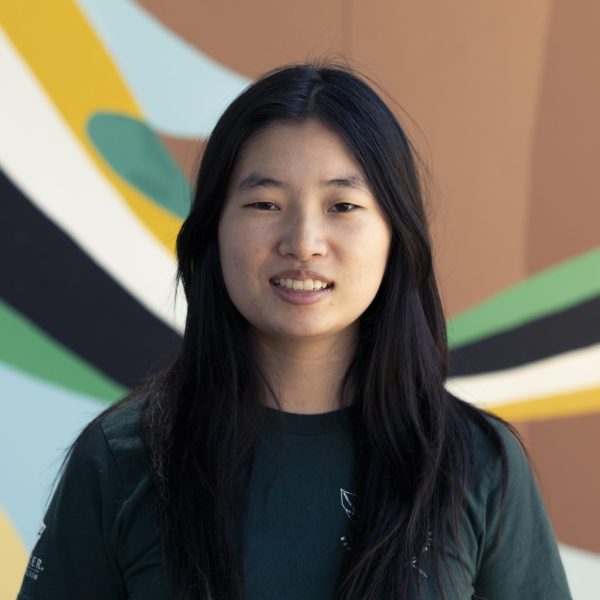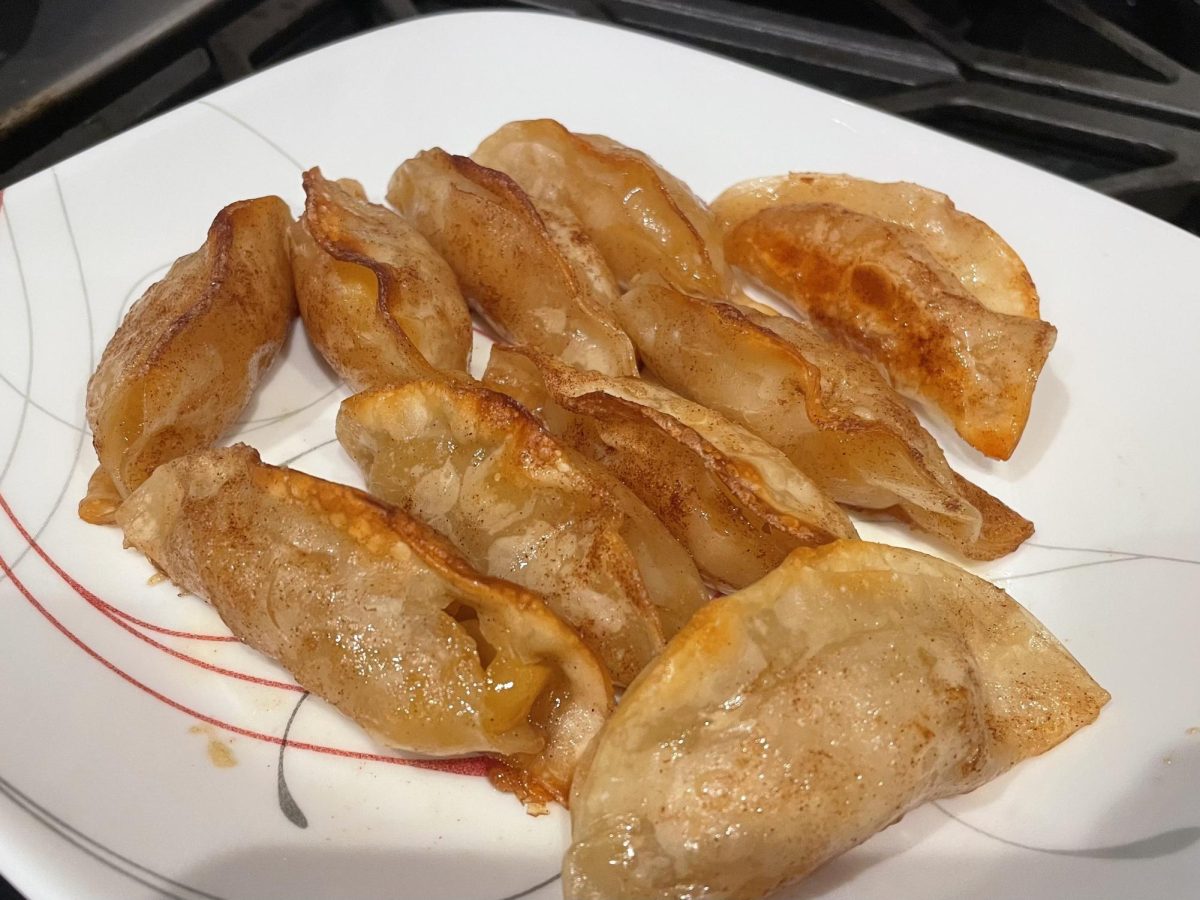Not so handy: Why AI art can’t draw hands
AI-generated illustration by Fotor AI with cutouts by Claire Zhao. “I have seen a few pieces where the hands are actually decent, but then most of the time they’re kind of just like blobs; they look like sausages,” Vika Gautham (10) said.
May 4, 2023
“Wow, these look like real photos and people!” “I can’t believe they were drawn by AI!” “Where is society going with this?”
These were some questions and comments that curious individuals like myself brought up while scrolling through artificial intelligence (AI) art showcases on Twitter, Instagram, YouTube, Google Images and more. With one minute and minimal typing, anyone can generate their own images — no artistic or photography experience required.
While the advent of AI art dates back to as early as 2018, new controversies surrounding the topic have arisen in recent years. After all, the line between organic creativity and artless synthesis may indeed be ambiguous. 504 Yale undergraduates could distinguish between AI art and human art over 54 percent of the time: that’s roughly five out of nine pieces shown to them in a 2023 survey done by Yale University.
Vika Gautham (10), a student who enjoys drawing in her free time, shared her experiences and opinions with AI art.
“I think that if people want to do it for fun, go ahead,” Vika said. “It’s a really cool and interesting concept to think that a machine can make some art. But at the same time, you can’t use that art to promote yourself and pass it off as your own work, because it’s just the work of a bunch of artists who actually put the time and effort into doing that.”
As I scrolled through these seemingly endless displays of AI’s quasi-creativity, I noticed that pages after pages simply comprised uncannily human faces. Interestingly though, when the images began moving away from the classic 1/4 headshot and towards more natural compositions, one final question about this new toolset began to emerge. Some things were definitely not as they seemed –– namely, hands. That question continued to linger in my mind as I clicked on a YouTube video by Vox, a popular video explainer channel that just happened to pop into my recommended.
“A postapocalyptic giraffe astronaut? Generated. Genghis Khan playing a guitar solo, pixel art? Generated. A man holding a delicious apple? Uh, what’s with his hands?” producer Phil Edwards said in the video.
These comments summed up my thoughts perfectly, including helpful visuals of some generated prompts. Some were unthinkably creative and some almost extraterrestrial, yet all were scarily accurate depictions. One constant remained, though: no matter the AI model, all of those generated human hands were always twisted, amorphous, missing continuity, too thin at some points and too plump at others.
“I have seen a few pieces where the hands are actually decent, but then most of the time they’re kind of just like blobs; they look like sausages,” Vika said. “As someone who has painstakingly studied hands and tried to draw them, that’s not how they should look.”
I visited the Fotor and StarryAI art generators to see this in action myself. My prompt was “a girl wearing a blue shirt and eating ice cream at a park.” It seemed fairly straightforward; across both models I used, the colors and focus were crisp as ever and there didn’t seem to be anything wrong with her face and clothes.
But as soon as I took a closer look at the hand holding the ice cream, things started to take a turn for the worse. From the indistinct, crooked bright pink fingernails and a nondescript floating pink blob to what seemed like an awkwardly-inserted extra finger and a thumb that seemed to be split in two, it was a grotesque sight to behold.

In the video, Edwards explains this phenomenon by comparing how humans and AI learn.
“Imagine an AI is like you, but trapped in a museum from birth,” Edwards said. “All the machine has to learn from are the pictures and the little placards on the side.”
AI art works by analyzing patterns from an image bank provided to the model by humans. Like Edwards mentioned, AI categorizes each image by its associations with certain phrases or words. When a user prompts the system, the AI regurgitates the patterns that it has seen before based on the input provided. But humans take a different approach: instead of being locked in a “museum” and forced to view images, we have the unique ability to experience the world for what it really is.
“If you want to understand an apple, you can rotate it in your hand,” Edwards said. “If AI wants to understand an apple, it has to find another picture of an apple in the museum.”
With the help of artist and instructor Stan Prokopenko, Massachusetts Institute of Technology (MIT) computer science PhD graduate student Yilun Du and MIT chief scientist and research affiliate Roy Shilkrot, Edwards narrowed AI’s hand-drawing issues to three main causes: the data size and quality, the way hands act and the low margin for error.
First, in the data sets that AI models are trained on, there aren’t as many images of hands as there are images of faces, meaning the hand patterns that AI finds are less accurate than they are for faces. On the other hand, these image banks have a glaring limitation: they don’t explain exactly what the hands are doing in each image.
“You don’t give the machine a lot of clues saying this is a person holding an umbrella,” Shilkrot said. “The thumb is going from one side of the handle and the fingers are curled, and the thumb is covering the index finger, but not the other one.”
The next problem arises from AI’s finite understanding of human anatomy, particularly hands. Most models are proficient in analyzing and putting together faces because of their uniform and proportional nature.
“There’s a pretty common portrait photo face; there are a lot of these photos online, and the thing is, everything is very well-centered,” Du said. “Eyes are always around here, there’s always this order.”
Hands, on the contrary, always look different and can embody a wide range of positions that AI fails to make sense of.
“How many fingers do you see right now? Like, two or three,” Prokopenko said. “It doesn’t know there are five.”
That brings us to the final error in AI-drawn hands: the low margin for error. Hands are very complex and precise anatomical structures, and the problem is, we don’t have the same tolerance as AI does for certain variations on those structures.
“AI makes pictures that are like hands it’s seen in the museum, but not an exact hand,” Edwards said. “That’s good enough for a ton of stuff, but not hands.”
Edwards demonstrated this by inputting the same image prompt into AI four times: “a man wearing a striped shirt and holding an apple.” Within these four trials, he noted a clear discrepancy that could solely be seen in the generated hands: their twisted and unclear shapes seemed to be the only off-putting element in each image.
“It changed the shirt stripes, the buttons, the apple style; none of that matters because it’s stripe-like, button-like and apple-like,” Edwards said. “But hand-like isn’t good enough.”
Edwards may be right about AI’s shaky hand-drawing skills. But this isn’t AI art’s final fate, nor is AI art an end-all be-all for us. Not only has it already shown potential to improve; various models are already on that path to success. All in all, AI does learn quickly, so we won’t have to wait long before seeing what used to be a hot mess become handier than ever.
“I think definitely, anything with AI definitely is going to improve further, but that doesn’t change whether it’s ethical or not,” Vika said. “If they can make an AI that can draw the art itself and not take works from other pre-existing images, I look forward to seeing that day.”




![LALC Vice President of External Affairs Raeanne Li (11) explains the International Phonetic Alphabet to attendees. "We decided to have more fun topics this year instead of just talking about the same things every year so our older members can also [enjoy],” Raeanne said.](https://harkeraquila.com/wp-content/uploads/2025/10/DSC_4627-1200x795.jpg)


















![“[Building nerf blasters] became this outlet of creativity for me that hasn't been matched by anything else. The process [of] making a build complete to your desire is such a painstakingly difficult process, but I've had to learn from [the skills needed from] soldering to proper painting. There's so many different options for everything, if you think about it, it exists. The best part is [that] if it doesn't exist, you can build it yourself," Ishaan Parate said.](https://harkeraquila.com/wp-content/uploads/2022/08/DSC_8149-900x604.jpg)




![“When I came into high school, I was ready to be a follower. But DECA was a game changer for me. It helped me overcome my fear of public speaking, and it's played such a major role in who I've become today. To be able to successfully lead a chapter of 150 students, an officer team and be one of the upperclassmen I once really admired is something I'm [really] proud of,” Anvitha Tummala ('21) said.](https://harkeraquila.com/wp-content/uploads/2021/07/Screen-Shot-2021-07-25-at-9.50.05-AM-900x594.png)







![“I think getting up in the morning and having a sense of purpose [is exciting]. I think without a certain amount of drive, life is kind of obsolete and mundane, and I think having that every single day is what makes each day unique and kind of makes life exciting,” Neymika Jain (12) said.](https://harkeraquila.com/wp-content/uploads/2017/06/Screen-Shot-2017-06-03-at-4.54.16-PM.png)








![“My slogan is ‘slow feet, don’t eat, and I’m hungry.’ You need to run fast to get where you are–you aren't going to get those championships if you aren't fast,” Angel Cervantes (12) said. “I want to do well in school on my tests and in track and win championships for my team. I live by that, [and] I can do that anywhere: in the classroom or on the field.”](https://harkeraquila.com/wp-content/uploads/2018/06/DSC5146-900x601.jpg)
![“[Volleyball has] taught me how to fall correctly, and another thing it taught is that you don’t have to be the best at something to be good at it. If you just hit the ball in a smart way, then it still scores points and you’re good at it. You could be a background player and still make a much bigger impact on the team than you would think,” Anya Gert (’20) said.](https://harkeraquila.com/wp-content/uploads/2020/06/AnnaGert_JinTuan_HoHPhotoEdited-600x900.jpeg)

![“I'm not nearly there yet, but [my confidence has] definitely been getting better since I was pretty shy and timid coming into Harker my freshman year. I know that there's a lot of people that are really confident in what they do, and I really admire them. Everyone's so driven and that has really pushed me to kind of try to find my own place in high school and be more confident,” Alyssa Huang (’20) said.](https://harkeraquila.com/wp-content/uploads/2020/06/AlyssaHuang_EmilyChen_HoHPhoto-900x749.jpeg)










